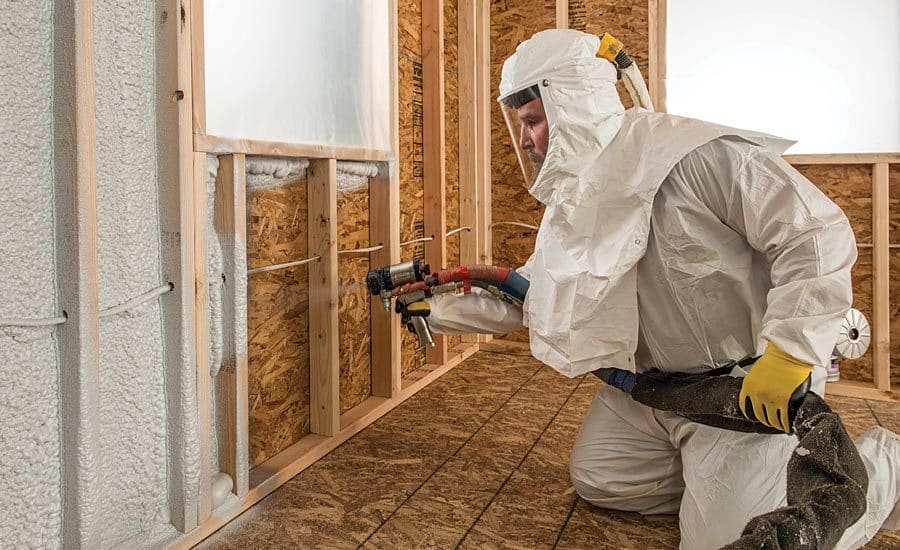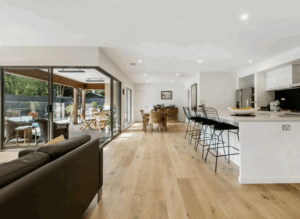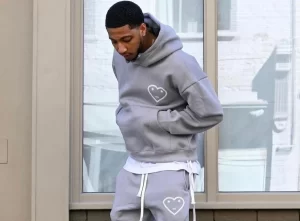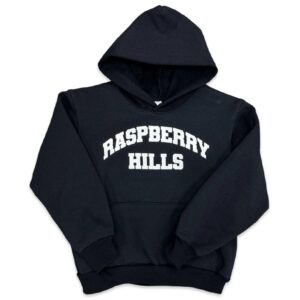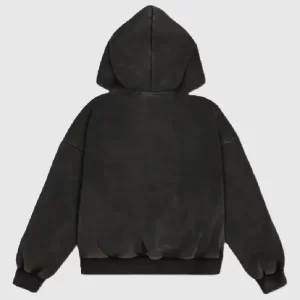Spray foam insulation offers Las Vegas homeowners 40-60% reduction in energy costs by creating an airtight thermal envelope that directly combats the region’s extreme temperature fluctuations. Properly installed spray foam maintains indoor temperatures more consistently than traditional insulation, reducing HVAC system runtime by 25-30% and extending equipment lifespan. This modern insulation solution specifically addresses the unique challenges of desert construction by providing superior resistance to both intense summer heat and winter temperature drops.
Las Vegas homes with spray foam insulation typically achieve complete payback within 3-5 years through energy savings alone. With over two decades of installation experience throughout the Mojave Desert region, evidence shows spray foam delivers measurably better performance than fiberglass or cellulose in the specific climate conditions of Southern Nevada, where building envelopes face temperature differentials exceeding 50°F between exterior and interior environments during peak summer months.
Energy Performance Metrics in Las Vegas Climate
Las Vegas presents unique energy efficiency challenges with its extreme desert climate. Spray foam insulation directly addresses these region-specific concerns with measurable performance improvements:
| Performance Metric | Traditional Fiberglass | Spray Foam | Improvement | Impact on Las Vegas Homes |
| Air Infiltration Reduction | 20-30% | 90-95% | 300% better | Significantly reduces dust and outside air penetration |
| Summer Heat Gain Reduction | 30-40% | 70-85% | 125% better | Lowers cooling costs during 120+ days over 90°F |
| R-Value Stability | Degrades 15-20% over time | Maintains 98% over lifetime | 5× longer performance | Ensures consistent protection through seasonal extremes |
| HVAC Runtime Reduction | 10-15% | 25-35% | 133% better | Extends equipment life in harsh desert conditions |
According to the Southwest Energy Efficiency Alliance’s 2024 report, properly installed spray foam insulation in desert climates reduces annual energy consumption by 25-40% compared to code-minimum insulation solutions, with greatest impacts observed during peak cooling months (Source: SWEA Annual Regional Performance Study, 2024).
BONUS TIP: For optimal energy performance in Las Vegas homes, prioritize attic insulation first. Local energy audits consistently show that poorly insulated attics account for 40-45% of total cooling losses in summer months when ambient temperatures in attic spaces can exceed 150°F.
Types of Spray Foam and Their Energy Impact
Different spray foam formulations deliver varying energy efficiency benefits specifically relevant to Las Vegas homes:
| Type | R-Value | Density | Air Sealing | Moisture Resistance | Best Energy Applications for Las Vegas | Cost-Efficiency Rating |
| Open Cell | 3.5-3.7 per inch | 0.5-0.6 lb/ft³ | Excellent | Moderate | Interior walls, sound dampening, balanced cost/performance | 8/10 |
| Closed Cell | 6.0-6.5 per inch | 2.0-2.4 lb/ft³ | Superior | Excellent | Exterior walls, rooflines, maximum energy efficiency | 9/10 |
| Hybrid Application | 4.5-5.5 average | Mixed | Excellent | Very Good | Optimized approach using each type where most effective | 10/10 |
The Department of Energy’s Building Technologies Office reports that air leakage accounts for 25-40% of energy used for heating and cooling in homes located in extreme climate zones like Las Vegas, making spray foam’s superior air sealing properties particularly valuable in this region (Source: DOE Building America Program Technical Report, 2023).
Climate-Specific Energy Considerations for Las Vegas
Las Vegas homes face unique energy challenges that spray foam insulation specifically addresses:
- Extreme Temperature Fluctuations: Desert climate creates daily temperature swings of 30°F or more. Spray foam’s thermal mass properties absorb these fluctuations, reducing the strain on HVAC systems during rapid temperature changes at sunrise and sunset.
- Low Humidity Impact: Las Vegas’ dry air allows faster heat transfer through traditional insulation. Spray foam creates a more effective barrier against this phenomenon, maintaining consistent R-values regardless of humidity levels.
- Dust Infiltration: The Las Vegas Valley’s dusty environment requires superior air sealing. Spray foam’s seamless application eliminates penetration points that allow dust-laden air to enter, reducing both energy loss and indoor air quality issues.
- Solar Radiation: Intense direct sunlight in Las Vegas creates radiation heating beyond simple conductive heat transfer. Closed cell foam’s density provides superior resistance to this radiation effect, particularly on west-facing walls and rooflines.
Energy Star certification data shows that properly insulated Las Vegas homes use 15-20% less energy than regional averages, with highest performers utilizing comprehensive spray foam systems (Source: Energy Star Building Performance Database, Western Region Analysis, 2024).
BONUS TIP: For maximum energy efficiency in Las Vegas homes, combine spray foam insulation with reflective roof coatings. This dual approach can reduce cooling costs by up to 70% compared to standard construction by addressing both conductive and radiative heat transfer mechanisms.
Technical Specifications and Energy Performance
| Application Area | Recommended Type | Optimal Thickness | Resulting R-Value | Energy Savings Potential | Payback Period |
| Attic | Open or Closed Cell | 5-7 inches | R-30 to R-45 | 25-35% of total energy bill | 2-4 years |
| Exterior Walls | Closed Cell | 3-4 inches | R-18 to R-26 | 15-25% of total energy bill | 3-5 years |
| Crawl Spaces | Closed Cell | 2-3 inches | R-12 to R-19 | 5-10% of total energy bill | 4-6 years |
| Rim Joists | Closed Cell | 2 inches | R-12 to R-13 | 3-5% of total energy bill | 5-7 years |
| Cantilevers | Closed Cell | 3 inches | R-18 to R-19 | 2-3% of total energy bill | 5-7 years |
Things to Consider Before Making a Decision
When evaluating spray foam insulation for energy efficiency improvements in Las Vegas homes, several critical factors deserve careful consideration:
- Current Insulation State: Homes built prior to 2000 typically have inadequate insulation for desert conditions. These properties generally see the most dramatic energy improvements after spray foam insulation, often experiencing 40-60% reductions in cooling costs.
- Building Envelope Assessment: A comprehensive energy audit identifies specific leakage points in the existing structure. This assessment determines which areas will deliver the greatest energy efficiency return when upgraded with spray foam.
- Ventilation Requirements: Creating an airtight building envelope necessitates proper mechanical ventilation. Energy recovery ventilators (ERVs) should be considered alongside spray foam insulation to maintain indoor air quality while preserving energy efficiency.
- HVAC System Compatibility: Newly insulated homes require less heating/cooling capacity. Existing systems may need adjustment or downsizing to match the reduced load, preventing short-cycling that reduces efficiency and equipment lifespan.
- Project Timing: In Las Vegas, optimal spray foam insulation occurs during moderate temperature seasons (spring/fall) when ambient conditions allow ideal foam curing and minimize thermal expansion/contraction issues in the building structure.
- Budget Allocation: Maximum energy efficiency comes from addressing all thermal envelope components. With limited budgets, prioritize areas with highest thermal exchange (typically attics in Las Vegas) rather than partial treatment of multiple areas.
Comprehensive Insulation Services
Attic Insulation
Specialized application of spray foam directly to roof decking creates an unvented attic system that dramatically reduces heat transfer from Las Vegas’ intense solar exposure. This approach transforms attics from major heat gain zones into semi-conditioned spaces, protecting HVAC equipment and ductwork often located in these areas while reducing cooling requirements by 25-35%.
Spray Foam Repairs
Targeted repair services address damaged, deteriorated, or improperly installed existing insulation. This precision approach restores energy efficiency by removing compromised sections, preparing surfaces, and implementing seamless integration with remaining insulation systems to eliminate thermal bypasses that reduce performance.
Wall Insulation
Wall cavity insulation utilizing specialized injection techniques significantly improves thermal performance without requiring complete wall removal. This retrofit solution addresses a major energy loss point in older Las Vegas homes while maintaining interior finishes, particularly valuable for homes with exterior stucco common throughout the region.
Commercial Spray Foam Insulation
Energy-focused insulation solutions for retail spaces, warehouses, and office buildings address the unique thermal challenges of commercial structures in desert environments. These applications deliver substantial utility savings through strategic application to large-scale surfaces while meeting commercial building codes and fire ratings.
Exterior Insulation
External insulation methods create continuous thermal envelopes that eliminate thermal bridging through framing members. This advanced approach prevents heat transfer through wall studs and structural elements that typically conduct significant thermal energy in Las Vegas’ extreme temperature conditions.
Foundation Insulation
Specialized foundation treatment protects concrete slabs and foundation walls from ground-source heat transfer. This often-overlooked insulation area prevents thermal transmission from concrete elements that absorb and radiate substantial heat in desert environments due to ground temperatures exceeding 80°F.
Residential Spray Foam Insulation
Comprehensive whole-home energy efficiency solutions combine multiple application areas into unified thermal strategies. These integrated approaches address attics, walls, and crawlspaces simultaneously to maximize overall building performance and energy savings throughout entire residences.
Roofing Insulation
Specialized roofing applications combine insulation and protective coatings for flat and low-slope roofs common in Las Vegas architecture. These systems reflect solar radiation while providing superior thermal barriers at the building’s most vulnerable point of heat gain during intense summer months.
Closed Cell Spray Foam Insulation
High-density closed cell foam insulation services deliver maximum R-value per inch and superior moisture resistance. This premium insulation solution creates rigid structural reinforcement while providing the highest possible thermal performance for areas requiring maximum protection from extreme desert conditions.
Open Cell Spray Foam Insulation
Light-density open cell foam insulation provides cost-effective thermal barriers with excellent sound dampening properties. This economical approach delivers substantial energy improvements for interior applications where moisture resistance is less critical but air sealing remains important.
Common Questions About Energy Efficiency Improvement
What energy savings percentage can Las Vegas homeowners realistically expect?
Las Vegas homes typically experience 30-50% reductions in cooling costs after comprehensive spray foam insulation. Properties with previously poor insulation often see savings at the higher end of this range, with cooling energy reductions occasionally reaching 60% in extreme cases.
How does spray foam compare to adding more traditional insulation for energy efficiency?
Spray foam delivers superior energy performance compared to equivalent R-values of traditional insulation due to its air-sealing properties. While fiberglass or cellulose may cost less initially, they typically allow 15-40% more energy loss in real-world conditions compared to spray foam with identical R-value ratings.
Should homeowners upgrade insulation before replacing HVAC equipment?
Insulation improvements should ideally precede HVAC replacement. The reduced thermal load after proper insulation installation allows for potentially smaller, less expensive HVAC equipment while improving overall system efficiency and comfort. Energy audits consistently show 15-25% HVAC capacity reductions are possible after comprehensive insulation upgrades.
Frequently Asked Questions
How long before energy savings offset the installation cost?
Most Las Vegas homeowners reach break-even on spray foam insulation within 3-5 years through energy savings alone. Properties with older, inadequate insulation typically experience faster returns, sometimes reaching payback in as little as 2-3 years during periods of higher energy costs.
Does spray foam insulation affect indoor air quality?
Modern spray foam formulations have minimal impact on indoor air quality after the proper curing period (24-48 hours). Professional installation includes comprehensive ventilation during application and typically recommends temporary relocation during this initial curing phase to ensure occupant safety.
Will spray foam insulation prevent ice dams in winter?
While less common in Las Vegas, occasional winter freezing can create roof ice damming. Spray foam applied to the underside of roof decking maintains uniform roof temperatures, effectively preventing the freeze-thaw cycles that create ice dams, thus protecting roofing systems from seasonal damage.
How does enhancing insulation affect HVAC equipment lifespan?
Properly installed spray foam typically extends HVAC equipment life by 30-50% by reducing system runtime and preventing short-cycling. Las Vegas HVAC systems in well-insulated homes operate fewer hours annually and maintain more consistent temperatures, significantly reducing mechanical wear.
Can spray foam insulation be phased to spread costs over time?
Yes, energy efficiency improvements can be implemented in strategic phases. Prioritize attic spaces first (delivering approximately 40% of total potential savings), followed by exterior walls (25-30% of savings), and finally foundation areas (10-15% of savings) to maximize return on each investment phase.
Ready to Achieve Maximum Energy Efficiency
Las Vegas homeowners can significantly reduce energy consumption while improving comfort through strategically applied spray foam insulation. The unique combination of air sealing, thermal resistance, and moisture control makes this solution particularly effective for addressing the extreme climate challenges specific to desert construction.
Apply these energy-saving insights now: Schedule a professional energy assessment with Supreme Spray Foam LV to identify the highest-impact improvement opportunities for your specific property. Contact [email protected] or call (702) 904-9895 to explore custom energy efficiency solutions.
Reviewer:
Michael Carter reviewed this article using insight gained over 12 years in the spray foam business. His feedback focused on helping contractors reach new customers without overcomplicating their message…

